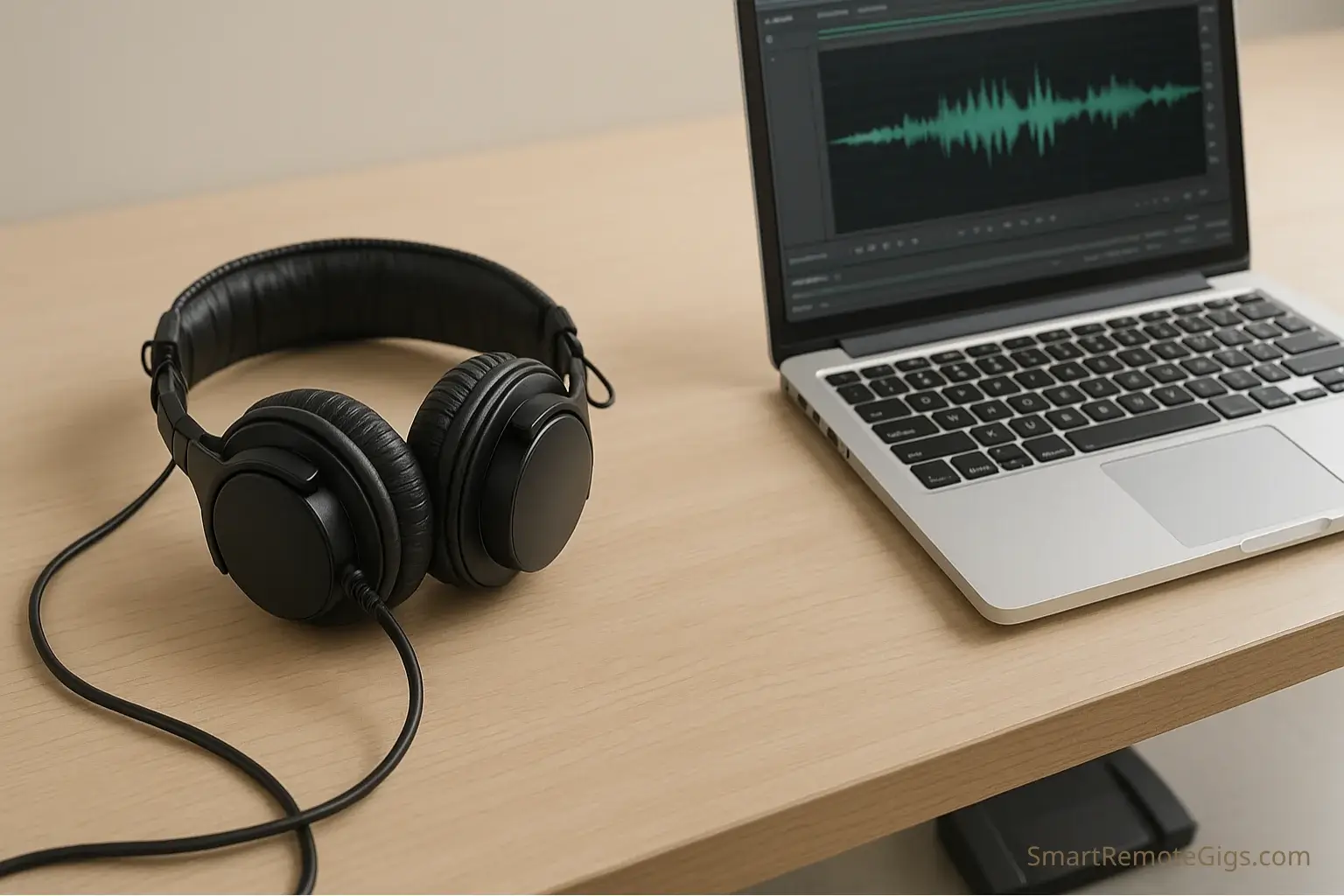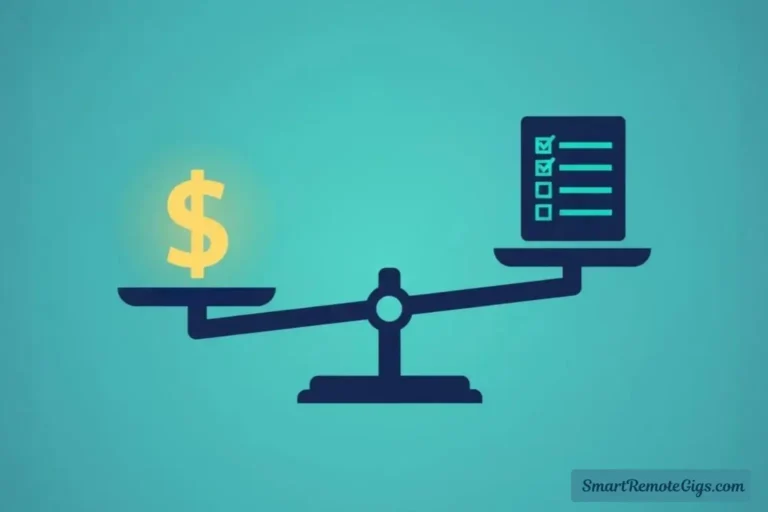Breaking into remote transcriptionist jobs requires more than just good listening skills—you need the right equipment, software knowledge, and test-taking strategies that most beginners overlook. While the barrier to entry appears low, succeeding in transcription jobs for beginners demands specific technical preparation that can make or break your application.
This practical guide eliminates the guesswork by providing exact gear recommendations, software tutorials, and insider knowledge about skills tests that determine whether you’ll land your first transcription contract. By following this systematic approach, you’ll avoid the common mistakes that cause 80% of new applicants to fail their initial assessments.
The transcriptionist pay ranges from $10-22 per hour depending on specialization and experience, with general transcription starting around $15-18 per hour for qualified beginners. Medical and legal transcription command premium rates of $18-25+ per hour, but require additional certification and training.
📌 New to remote jobs with no experience?
This guide is part of our full series on beginner-friendly roles. Start with the main guide:
👉 Remote Jobs No Experience: Your Definitive 2025 Guide
So You’ve Chosen Transcription? Here’s Your Starter Kit
Transcription is an excellent choice for those with a keen ear and attention to detail. This guide will walk you through the exact equipment, software, and skills you need to pass the entry tests that most beginners face. Let’s get you set up for success.
Learning how to become a transcriptionist involves three critical phases: assembling professional-grade equipment, mastering transcription software, and passing rigorous skills assessments. Most platforms reject 70-80% of applicants during the testing phase, primarily due to inadequate preparation rather than lack of ability.
The transcription industry has evolved significantly with remote work adoption. Major platforms now process millions of audio hours monthly, creating consistent demand for qualified transcriptionists who can meet strict accuracy and formatting standards. Success requires treating transcription as a technical skill requiring proper tools and systematic practice.
Step 1: Assemble Your Gear (Budget-Friendly Options)
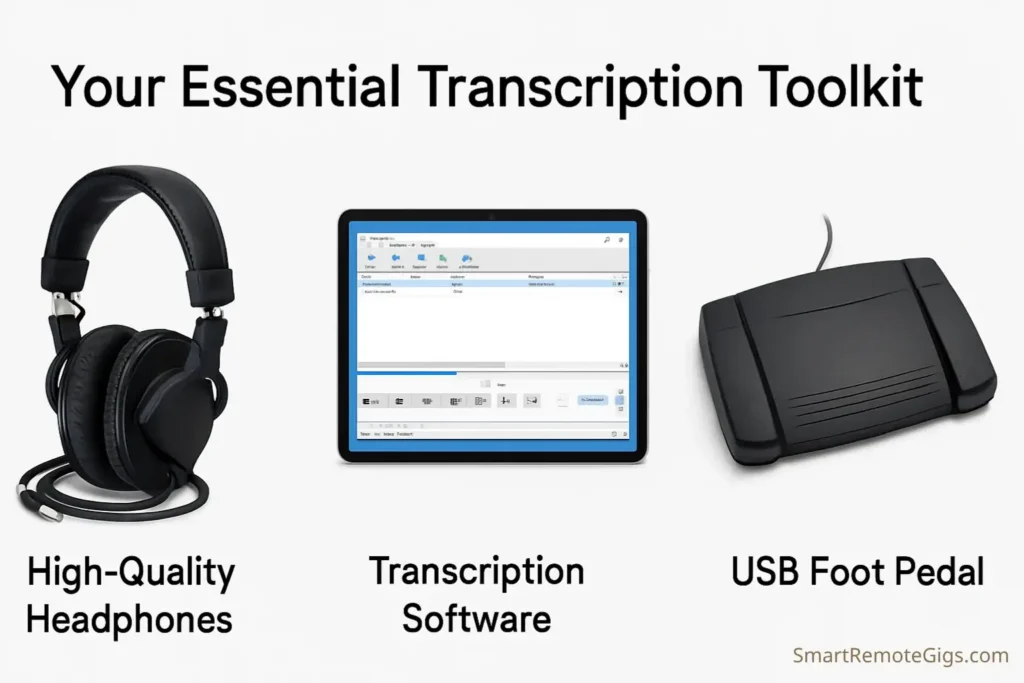
Professional transcription equipment directly impacts your accuracy, speed, and earning potential. Investing in quality gear upfront prevents the frustration of missed words, repeated audio sections, and failed quality assessments that plague beginners using inadequate equipment.
Essential #1: High-Quality Headphones
The Difference Between Noise-Canceling and Standard Headphones
Noise-canceling headphones use active technology to reduce background noise, allowing you to hear subtle audio details without increasing volume to dangerous levels. Standard headphones rely on passive isolation through ear cup design. For transcription work, clarity and comfort during extended use matter more than bass response or wireless features.
Professional-grade headphones reveal audio details that consumer models miss: speaker identification in group conversations, quiet speech segments, and background context that affects meaning. Poor headphones force you to replay sections repeatedly, destroying productivity and accuracy.
Recommended Models by Budget:
Budget Option ($30-50): Audio-Technica ATH-M20x
- Closed-back design blocks external noise
- Clear midrange reproduction for speech clarity
- Comfortable for 4-6 hour sessions
- Durable construction for daily use
Professional Standard ($80-120): Sony MDR-7506
- Industry standard in recording studios
- Exceptional speech clarity and detail resolution
- Replaceable ear pads and cables
- Proven reliability over years of heavy use
Premium Choice ($150-200): Beyerdynamic DT 770 Pro
- Open-back design for natural sound reproduction
- Superior comfort for 8+ hour work sessions
- Excellent stereo imaging for multi-speaker identification
- Professional build quality with replaceable components
💡 Pro Tip: Avoid wireless headphones for professional transcription. Bluetooth compression reduces audio quality, and battery life interrupts workflow during long sessions.
Essential #2: Transcription Software
What Transcription Software Does
Transcription software provides playback controls optimized for typing while listening: variable speed adjustment, instant rewind functions, and keyboard shortcuts that eliminate mouse usage. Standard media players lack these essential features, making professional transcription nearly impossible.
Express Scribe: The Industry Standard
Express Scribe dominates professional transcription because it handles virtually every audio format while providing precise playback control. The free version includes all essential features for beginners, with paid upgrades adding advanced functionality for specialized work.
Key Features for Transcriptionists:
- Variable Speed Control: Slow down unclear speech without pitch distortion
- Instant Rewind: Configurable skip-back intervals (typically 2-5 seconds)
- Foot Pedal Support: Hands-free playback control for maximum typing efficiency
- Hot Key Integration: Customize keyboard shortcuts for seamless workflow
- File Management: Organize projects and track completion status
Setup Instructions:
- Download Express Scribe free version from official website
- Configure playback speed to 80-90% for training (increase as skills improve)
- Set rewind interval to 3 seconds for optimal workflow
- Assign F1-F4 keys for play/pause, rewind, fast-forward, and speed adjustment
- Test configuration with sample audio before starting paid work
Optional (but Recommended): A Foot Pedal
How Foot Pedals Boost Speed and Accuracy
Foot pedals eliminate the constant interruption of reaching for keyboard controls, allowing continuous typing flow while maintaining complete playback control. Professional transcriptionists average 20-30% higher productivity with foot pedal integration compared to keyboard-only workflows.
The productivity gain comes from uninterrupted focus: your hands never leave the keyboard, your eyes stay on the text, and your mind maintains context without breaking concentration for technical controls.
Popular Model Recommendation: Infinity IN-USB-2
- Price Range: $40-60
- Compatibility: Works with Express Scribe and major transcription platforms
- Design: Three-pedal configuration (rewind, play/pause, fast-forward)
- Build Quality: Durable construction for daily professional use
- Setup: Plug-and-play USB connection with customizable sensitivity
Alternative Budget Option: Transcription Buddy USB Foot Pedal ($25-35)
- Single pedal design for basic play/pause control
- Compatible with most transcription software
- Good entry-level option for testing workflow preferences
- Upgrade path available once you establish consistent work volume
Step 2: Pass the Test (How to Get Accepted by Major Platforms)
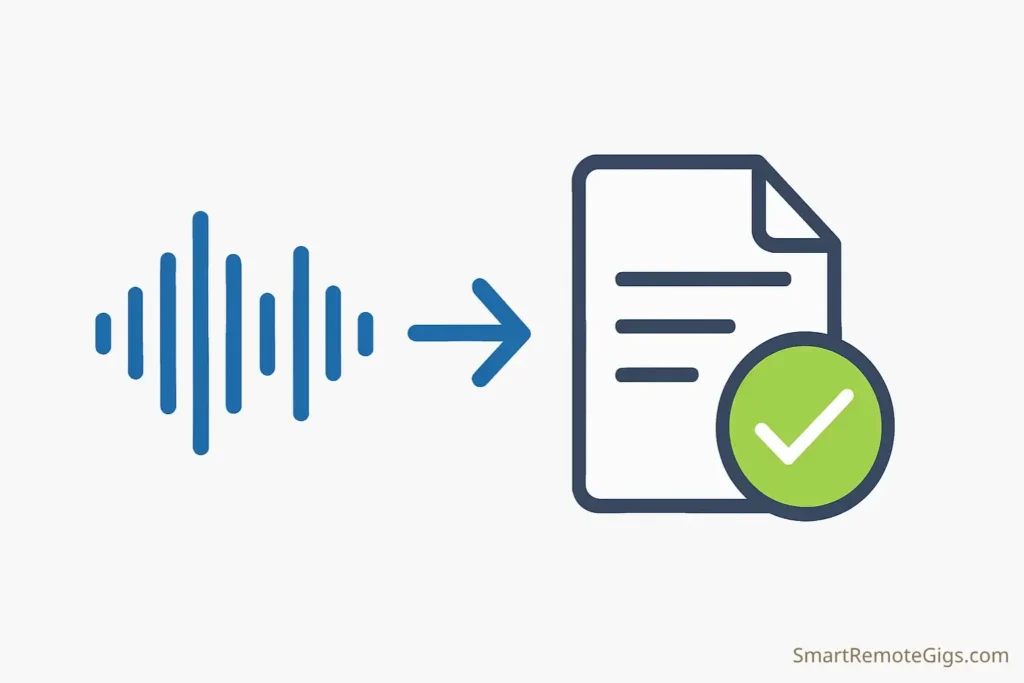
The skills assessment represents the biggest hurdle for beginners entering transcription jobs for beginners. Most platforms maintain acceptance rates below 30%, with technical preparation and style guide mastery determining success more than natural listening ability.
Understanding Style Guides
Each Company Has Its Own Formatting Rules
Style guides dictate precisely how to handle every transcription scenario: speaker identification, background noise, unclear speech, and non-verbal sounds. These rules vary significantly between platforms, and failing to follow them exactly results in automatic rejection regardless of accuracy.
Common Style Guide Elements:
- Filler Words: Some platforms want “um, uh, ah” included exactly as spoken, others require complete removal
- False Starts: Rules for handling interrupted sentences and speaker corrections
- Background Noise: How to indicate music, phone rings, or environmental sounds
- Speaker Identification: Formatting for multiple speakers in conversations
- Time Stamps: When and how to insert time markers in longer recordings
Critical Success Factor: Study the specific style guide thoroughly before attempting any test. Print it out and reference it continuously during practice sessions. Most rejections occur because applicants focus on accuracy while ignoring formatting requirements.
💡 The #1 Reason Beginners Fail
Focusing 100% on typing accuracy while ignoring the platform’s specific Style Guide. Print the style guide out and treat it as your bible during the test. Perfect formatting is just as important as perfect spelling. More qualified applicants are rejected for style guide violations than for transcription errors.
Where to Find Practice Files
Free Resources for Skill Development
Rev Training Materials: Rev provides sample audio files with completed transcripts showing their exact style requirements. These materials are invaluable for understanding professional standards before taking their assessment.
TranscribeMe Practice Center: Offers graded practice exercises that simulate their actual testing environment, including style guide application and quality scoring.
YouTube Educational Channels: Search for “transcription practice” to find channels offering free audio with downloadable transcripts for accuracy checking.
University Lecture Recordings: Many universities publish lecture recordings with transcripts, providing challenging multi-speaker scenarios similar to professional work.
Podcast Transcripts: Compare your transcription against published podcast transcripts to identify common error patterns and improve accuracy.
📚 Practice Strategy: Complete at least 10 hours of practice transcription before attempting platform assessments. Track your accuracy rate and aim for 98% or higher on practice materials.
A Walkthrough of a Typical Skills Test
The Standard Assessment Process
Phase 1: Account Setup and Agreement
- Complete profile information and tax documentation
- Sign confidentiality and contractor agreements
- Review platform-specific style guide thoroughly
- Download required software and test compatibility
Phase 2: Skills Assessment
- Receive 3-10 minute audio file (usually conversation or interview format)
- Given 2-4 hours to complete transcription
- Must achieve 98%+ accuracy with perfect style guide compliance
- Submit through platform’s designated system
Phase 3: Quality Review
- Experienced transcriptionists grade your submission
- Assessment covers accuracy, formatting, grammar, and style guide adherence
- Feedback provided for failed attempts (policies vary by platform)
- Successful completion grants access to paid projects
Common Test Scenarios:
- Phone Interview: Two speakers with varying audio quality
- Focus Group: Multiple speakers with occasional overlapping speech
- Lecture Recording: Single speaker with technical terminology
- Business Meeting: Professional conversation with industry-specific language
Success Strategies:
- Read Instructions Twice: Ensure complete understanding before starting
- Use Slow Playback: Start at 70-80% speed for maximum accuracy
- Proofread Thoroughly: Check grammar, spelling, and formatting before submission
- Time Management: Allow 4-6 times the audio length for completion
- Style Guide Reference: Keep guide open and reference frequently
The Top 3 Platforms for Beginner Transcriptionists
Understanding platform differences helps you choose the best starting point for your transcription career. Each platform serves different market segments with varying requirements, pay structures, and acceptance criteria.
| Platform | Pay Structure | Difficulty Level | Acceptance Rate | Pros | Cons |
|---|---|---|---|---|---|
| Rev | $0.30-1.10 per audio minute | Moderate | ~20% | Higher pay rates, consistent work volume, professional development opportunities | Strict grading system, immediate account suspension for quality issues |
| TranscribeMe | $0.15-0.45 per audio minute | Easy | ~40% | Easier entry requirements, shorter audio segments (2-4 minutes), flexible scheduling | Lower pay rates, limited growth opportunities, high competition for projects |
| GoTranscript | $0.60-0.85 per audio minute | Easy-Moderate | ~30% | Competitive pay rates, variety of work types, weekly payments | Inconsistent work availability, stricter style requirements than advertised |
Platform Deep Dive: Rev
Best For: Experienced beginners who can meet high standards consistently
Rev maintains the highest quality standards in general transcription, making it the most challenging platform for beginners but offering the best long-term earning potential. Their grading system provides detailed feedback that helps develop professional skills quickly.
Getting Started with Rev:
- Complete their comprehensive style guide training
- Practice with their sample files extensively
- Take assessment during business hours for faster results
- Expect 1-2 week wait for test results
- Start with shorter projects to build quality metrics
Platform Deep Dive: TranscribeMe
Best For: Complete beginners who need to build confidence and basic skills
TranscribeMe’s shorter audio segments (2-4 minutes) make it ideal for developing transcription skills without overwhelming complexity. Lower pay is offset by easier entry requirements and more flexible quality standards.
Getting Started with TranscribeMe:
- Focus on accuracy over speed initially
- Utilize their practice portal extensively
- Apply during high-demand periods (Monday-Wednesday)
- Complete profile thoroughly to improve acceptance chances
- Plan to supplement with other platforms as skills develop
Platform Deep Dive: GoTranscript
Best For: Beginners seeking variety and competitive pay without Rev’s strict requirements
GoTranscript offers the best balance of reasonable entry requirements and fair compensation. Their diverse client base provides exposure to different industries and transcription challenges.
Getting Started with GoTranscript:
- Study their style guide carefully (more detailed than it appears)
- Practice with challenging audio to prepare for their varied content
- Apply early in the week for faster processing
- Focus on building consistent quality scores
- Take advantage of their referral bonus program
Conclusion: Turning Your Listening Skills into Income
Success in remote transcriptionist jobs follows a systematic three-step process: invest in proper equipment, master the technical skills through deliberate practice, and approach platform assessments with professional preparation. This methodical approach transforms a competitive field into an accessible career path for dedicated beginners.
Your Action Plan:

- Gear Up: Invest in quality headphones and transcription software before applying anywhere
- Practice Systematically: Complete 10+ hours of practice transcription using real audio files
- Apply Strategically: Research platform requirements thoroughly and prepare for specific style guides
The transcription industry rewards consistency, accuracy, and professional development. Your first platform acceptance is just the beginning—successful transcriptionists continuously improve their skills, maintain quality metrics, and often expand into specialized fields like medical or legal transcription where rates can exceed $25 per hour.
Remember that persistence pays off in transcription work. Many successful transcriptionists faced initial rejections before finding their rhythm. The key is treating each assessment as a learning opportunity and continuously refining your technical setup and skills.
Start with the equipment recommendations in this guide, practice with the suggested resources, and approach your first assessment with confidence. Your listening skills combined with proper preparation will open doors to flexible, well-paying remote work that fits your schedule and lifestyle.
The remote work revolution has created unprecedented demand for skilled transcriptionists. Your success story begins with taking the first systematic step toward professional preparation.
Looking for more flexible roles like transcription? Discover a full range of opportunities in our guide to the best part-time remote jobs.
This guide provides a step-by-step roadmap for beginners to land remote transcriptionist jobs. Learn how to assemble your gear, pass the skills tests, and get accepted by the top platforms for beginner transcriptionists.
Total Time: 28 days
Assemble Your Gear (Budget-Friendly Options)
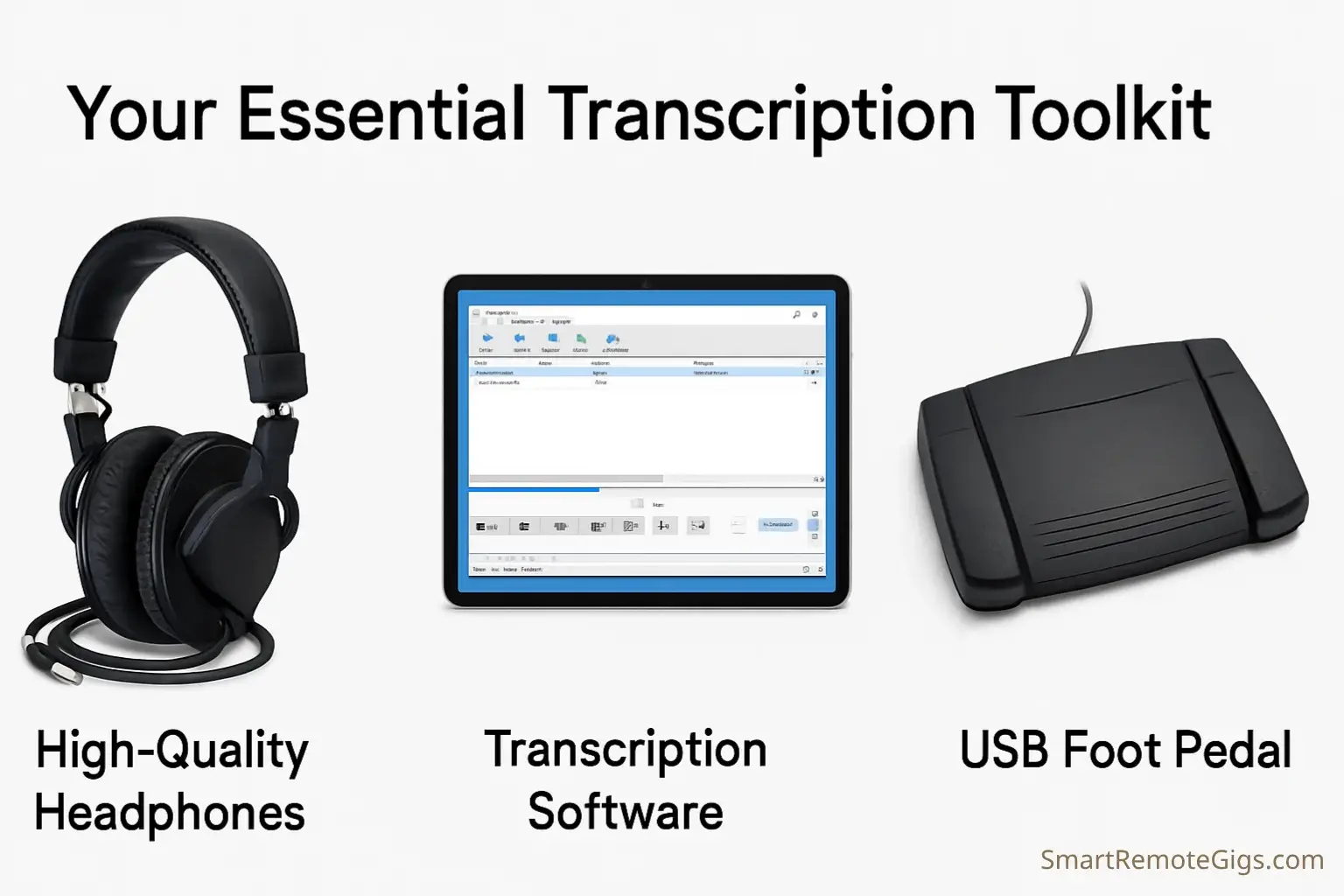
Invest in the right equipment to ensure accuracy and speed. Start with high-quality, noise-canceling headphones, install professional transcription software like Express Scribe, and consider a foot pedal to boost your productivity.
Pass the Test (How to Get Accepted by Major Platforms)
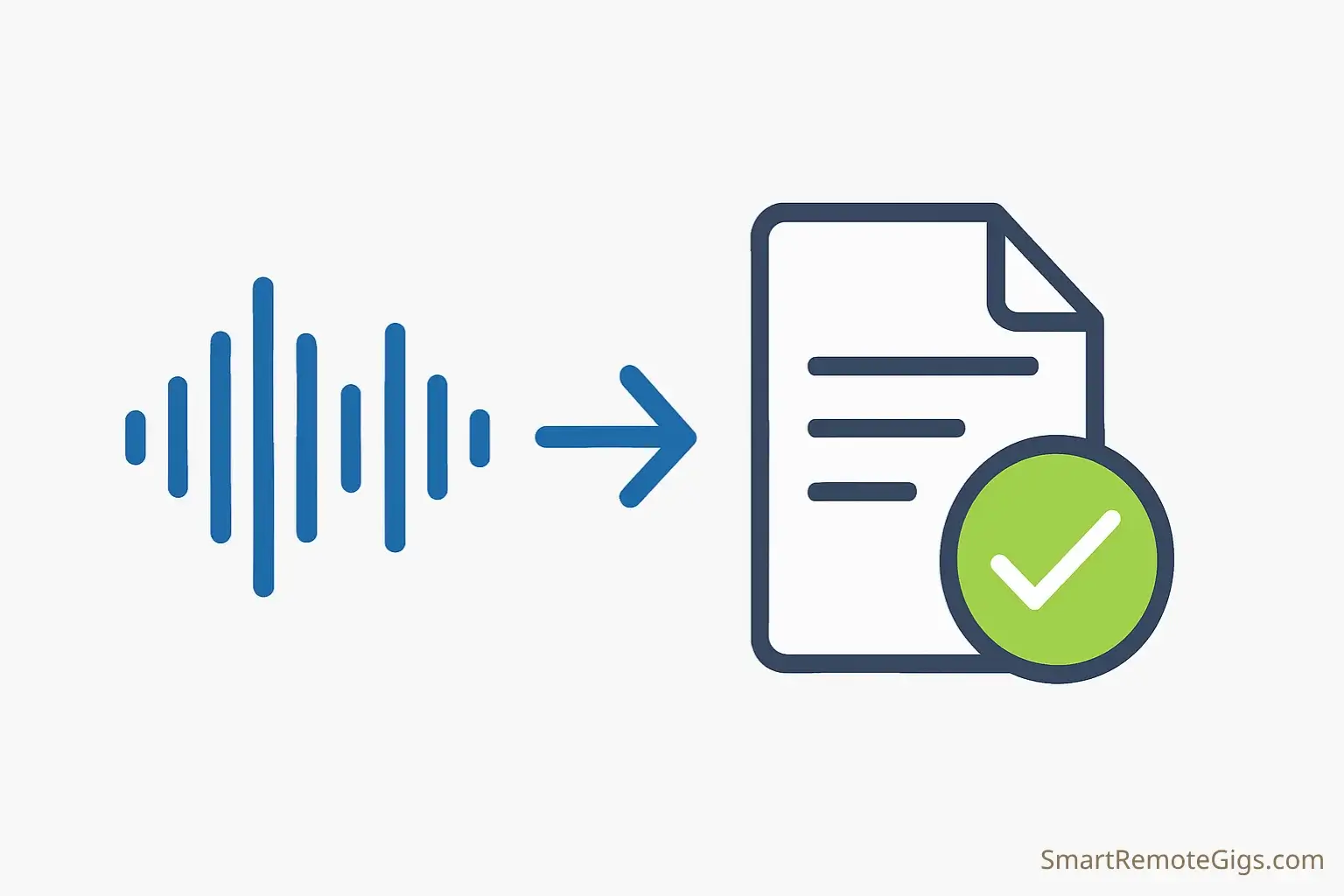
The skills assessment is the biggest hurdle. The key is to study the specific style guide of each platform (e.g., Rev, TranscribeMe) thoroughly. Use free practice files to complete at least 10 hours of practice before attempting any test.
Apply to the Top 3 Platforms for Beginner Transcriptionists
Choose the right platform for your skill level. Start with platforms like TranscribeMe for easier entry, move to GoTranscript for a balance of pay and requirements, and aim for Rev once you have built your confidence and can meet their high standards.
Tools:
- High-quality headphones
- Transcription software (e.g., Express Scribe)
- A foot pedal (optional but recommended)
- Practice audio files
- Platform-specific style guides
